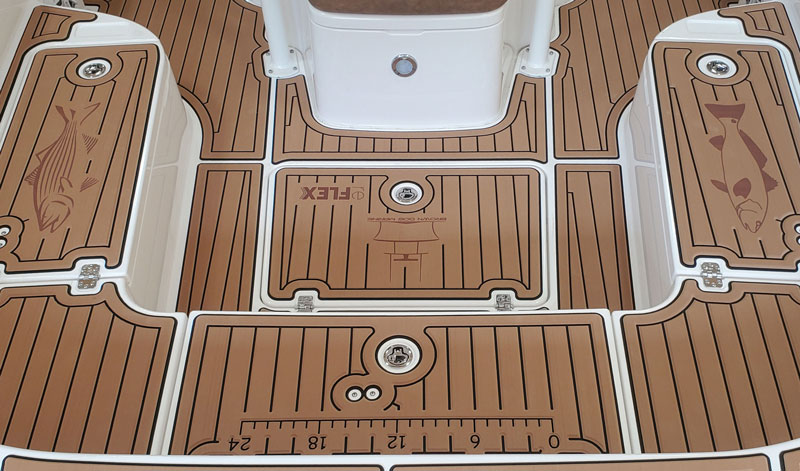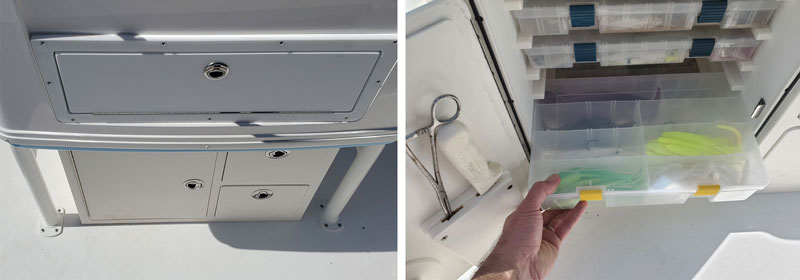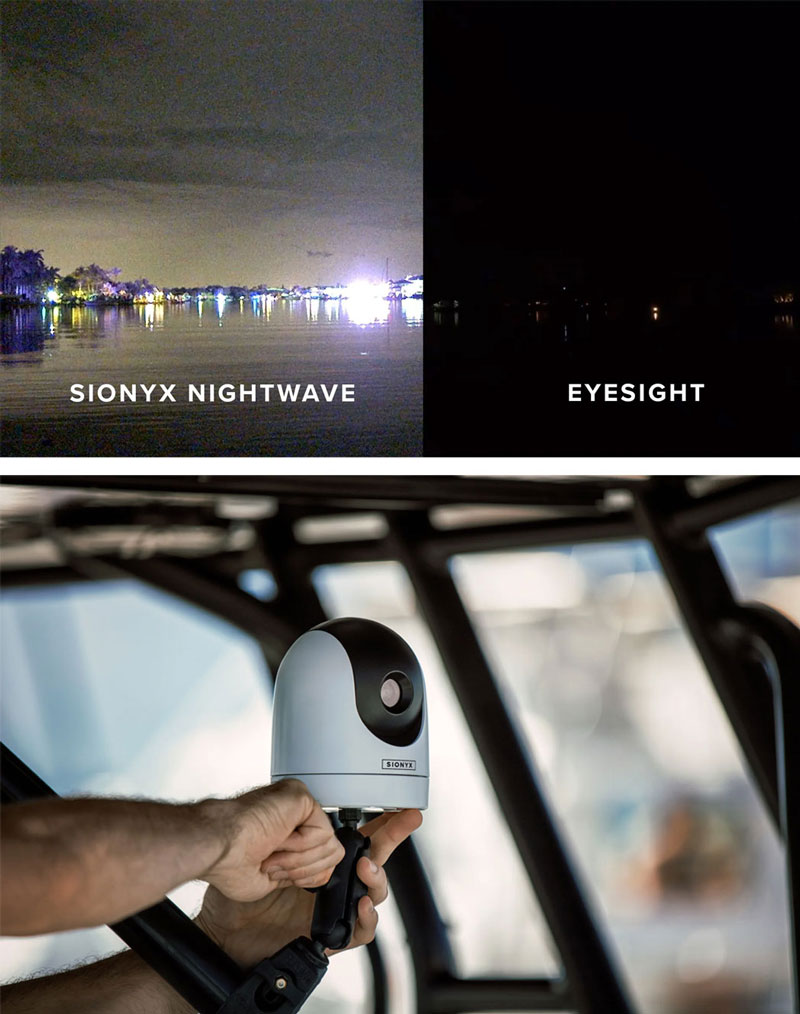Last summer in our long-term test of the Caymas 26 HB we mentioned a number of boat improvements that have gussied up the FishTalker, and we promised we’d take a closer look at them down the line. Are you ready for some surefire ways to make your fishing boat better? Consider:
Foam Boat Decking: Get Decked
Getting the boat decked out in foam decking is what I personally consider the biggest improvement of all. The reason is simple: I have a bad back, and standing on a rock-solid fiberglass deck all day long takes a toll. Standing at the helm while running across choppy seas takes an even bigger toll. But walking around on this stuff I feel a reduction in wear and tear on my back that I’d put at around 30 percent. On top of that, the pain of kneeling on nonskid is ancient history.
My first experience with foam decking dates back seven or eight years, when I decked my Glacier Bay in SeaDek. I’m not artistic and it didn’t look great, but my body was grateful for the relief. Then ShipsDeck, a Baltimore-based outfit, replaced the SeaDek with templated, router-cut foam, which improved the visual appeal 100 percent.
The FishTalker decking was templated via photographic imagery, loaded into a computer with the custom graphics and patterns I chose, then cut by a CNC router and laser-etched to rather amazing tolerances. I chose Brown Dog Marine for the job (naturally, since they’re FishTalk supporters – thanks, guys!), and the material they use is called reFlex. I could blather on about how awesome it looks and how exact the fit is, but just look at the pictures and judge for yourself.

Everyone asks: how tough is it to keep this stuff clean? The answer: no tougher than nonskid. Sometimes stains don’t want to scrub out initially, but just like on nonskid they tend to bleach out after a few days in the sun. After a full season of fishing (about 350 hours are now on the boat) there aren’t any noticeable blemishes to speak of.
Everyone asks: how rugged is this stuff? The answer: pretty dang rugged. So far I made a visible rip in the material’s surface about half an inch long when I shoved a tagging needle into the decking (oops), there’s a pectoral fin piercing where I laid a large blue cat on its side (oops again), and a mystery scuff about the size of a nickel.
Everyone asks: how long will this stuff stay put? The answer: it’s something of an open question. ReFlex says it’s good for a minimum of five years and if properly cared for and covered, “much longer.” But since we’ve only used it for one year thus far, at this point we can’t validate their claims.
Everyone asks: how much does it cost? The answer: we wish we could tell you, but every boat is different and some are a lot more complex than others. The level of customization you get has an impact on the bottom line, too. To get a real-world answer you’ll have to get an estimate.
Onboard Fishing Tackle Station: Battle Stations

Do you enjoy lugging around a 25-pound tackle bag every time you go to your boat? Do you love tripping over it while you’re fighting a fish? Do you get psyched when you realize the exact topwater plug or spoon you want is sitting at home in your other tackle box? Insufficient onboard tackle stowage is a pet peeve of mine, and truth be told, few boats 26 and under have what I would call sufficient. That includes the Caymas, so rather than opting for one of those slide-out coolers under the leaning post I installed a Teak Isle tackle station from Boat Outfitters.
Teak Isle makes a huge range of tackle stations from single-box units to massive angling armoires. The one that fit perfectly under my leaning post is the Free Standing Leaning Post Tackle Unit, at 20.5” tall, 28.6” wide, and 13.25” deep. That gets me two bulk stowage drawers, three large Plano 3700 tackle boxes, two Plano 3730 double-deep boxes, knife holders, pliers holders, and a leader spool holder. The doors are gasketed and lock so everything inside stays dry and safe, and it’s easy to access while sitting in the flip-up aft bench seat.
These tackle stations don’t come cheap and the bigger they are the more they cost. The one on the FishTalker currently lists at $1400. If you’re willing to spring for it, just do yourself a favor and don’t think about how much money you’ll spend trying to fill that thing up.
Sionyx Night Vision for Night Fishin’

We covered the electronics on this boat last time, but that was before a Sionyx Nightwave came into the picture. I’ll be the first to admit that mounting a night vision camera on a small center console is a little much — especially for someone like me who can barely manage to stay awake after the sun hits the horizon. But in my younger days I did do quite a bit of night fishing, and every once in a blue moon I still get struck by the desire, so I can see how someone would want night vision aboard.
Of course, it would be pretty ridiculous to have a night vision camera mounted to the hard top and wired in to the MFD when you know you’ll use it no more than a time or two a season. Which is where the Nightwave comes in. With this camera you can affix it to a removable RAM mount, leave the wires in the box, and instead stream the illuminated imagery to any device with WiFi and the Sionyx App installed. That visual acuity will cost you $1995.
Will these improvements prove perfect for you and your needs? Maybe, and maybe not. We all have our own priorities. But one thing is for sure: with foam decking, a fat tackle station, or night vision aboard, your fishing boat will be even better than it is right now.